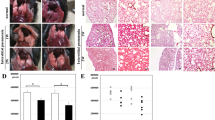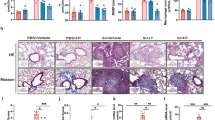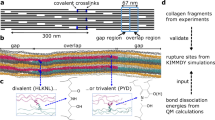Abstract
ELECTRON micrographs of normal connective tissue reveal a very fine protein network superimposed on a much coarser network1. The interstices are filled with protofibrils and mucopolysaccharidic acids of high molecular weight. Fibrous connective tissue is produced when lung tissue is degenerated by silica particles, the silicic acid formed by the dissolution of the silica probably being involved, and the possible analogy between the role of silicic acid and that of the mucopolysaccharides is evident.
This is a preview of subscription content, access via your institution
Access options
Subscribe to this journal
Receive 51 print issues and online access
$199.00 per year
only $3.90 per issue
Buy this article
- Purchase on SpringerLink
- Instant access to full article PDF
Prices may be subject to local taxes which are calculated during checkout
Similar content being viewed by others
References
Wasserman, F., Anat. Rec., 3, 145 (1951).
Day, T. D., J. Physiol., 117, 1 (1952).
Day, T. D., Nature, 166, 785 (1950).
Gersh, I., and Catchpole, H. R., Amer. J. Anat., 85, 457 (1949).
Mancini, R. E., and Sucerdote de Lustig, E., J. Nat. Cancer Inst., 10, 1371 (1950).
Author information
Authors and Affiliations
Rights and permissions
About this article
Cite this article
HOLT, P., OSBORNE, S. Formation of Silicotic Tissue. Nature 171, 892 (1953). https://doi.org/10.1038/171892a0
Issue date:
DOI: https://doi.org/10.1038/171892a0
This article is cited by
-
Versuche zur Frage, ob sich durch das Inhalieren von Hyaluronidase w�hrend einer Bestaubung die Entwicklung der Silikose bei der Ratte beeinflussen l��t
Internationales Archiv f�r Gewerbepathologie und Gewerbehygiene (1962)



